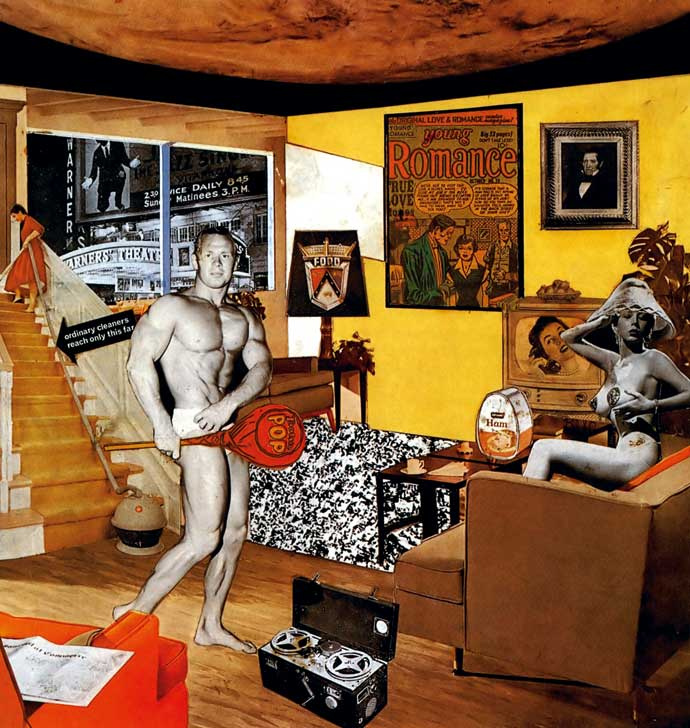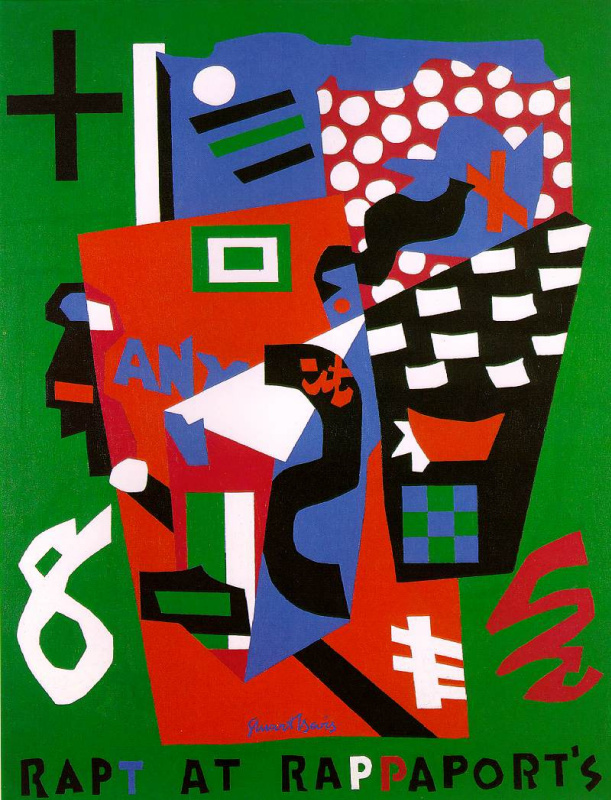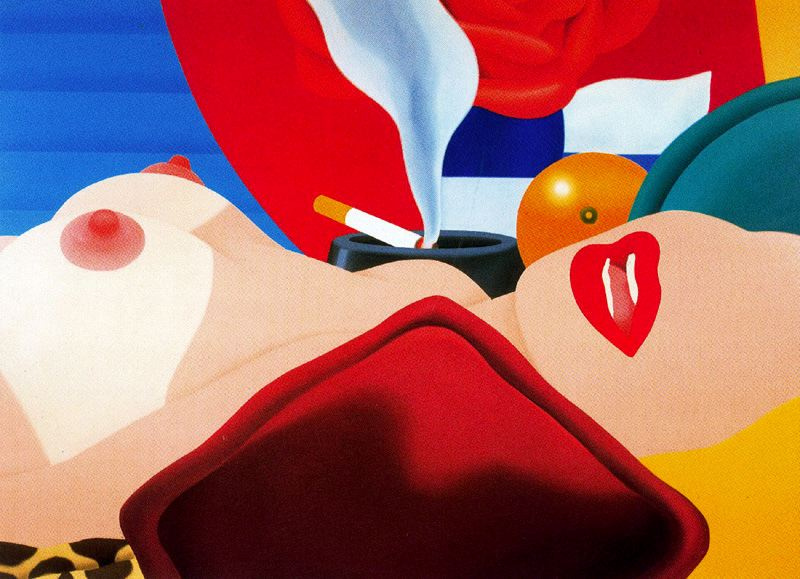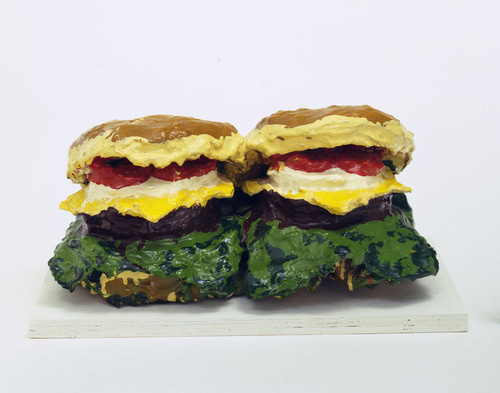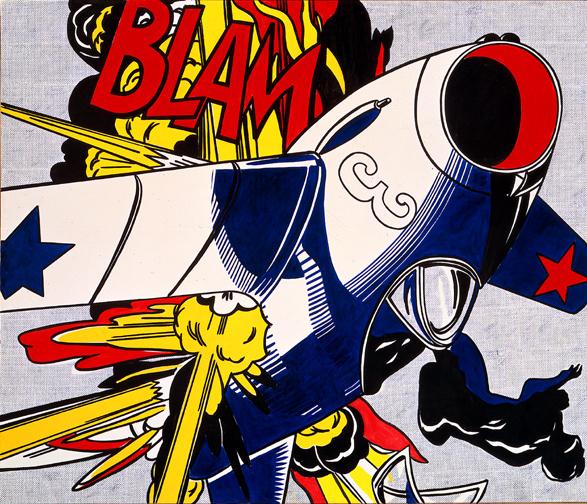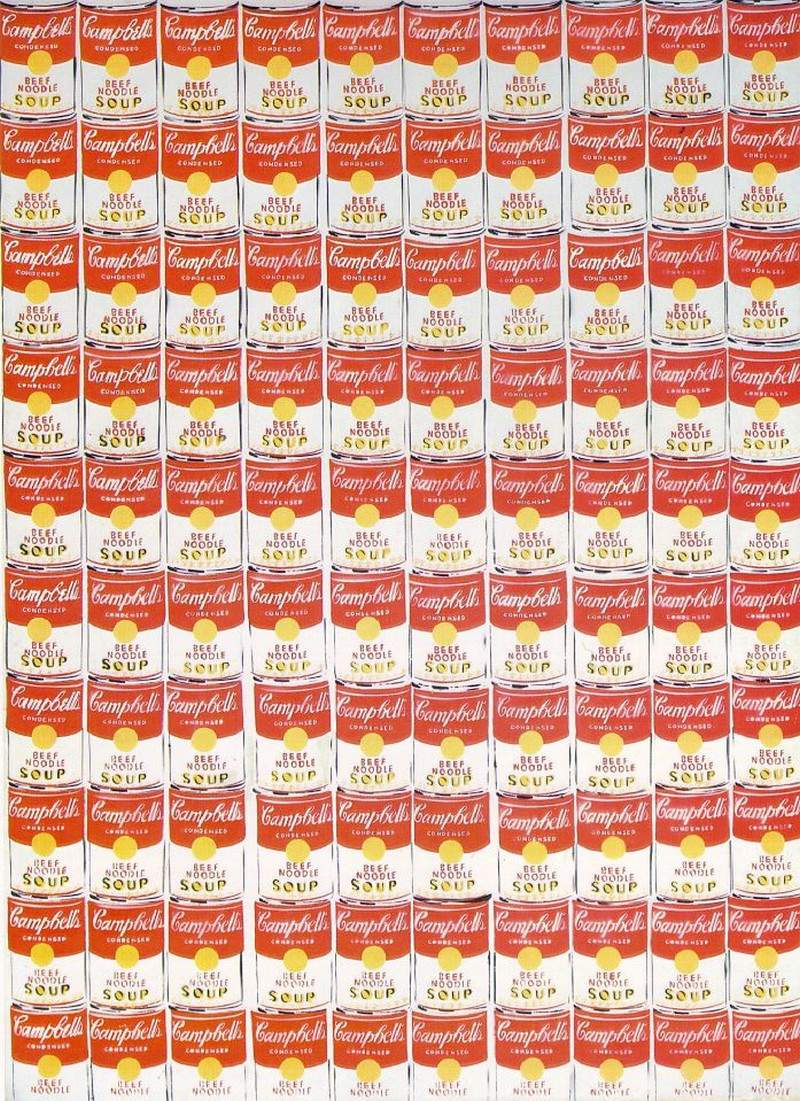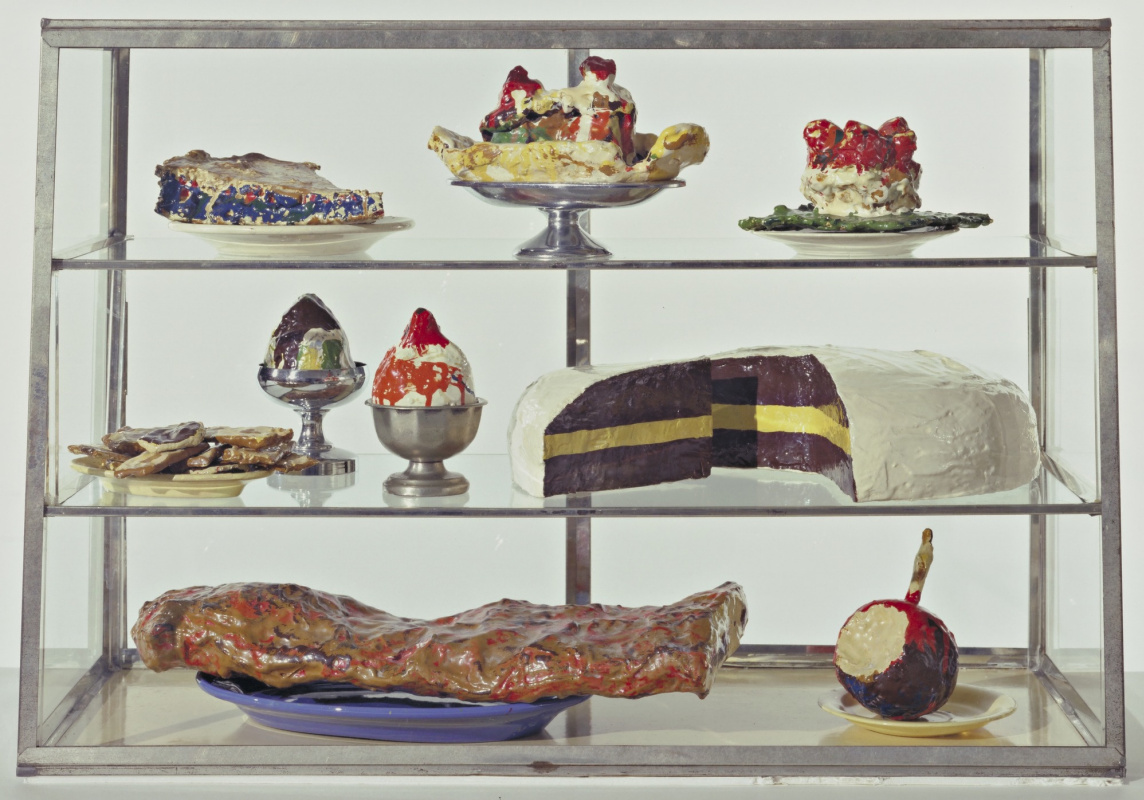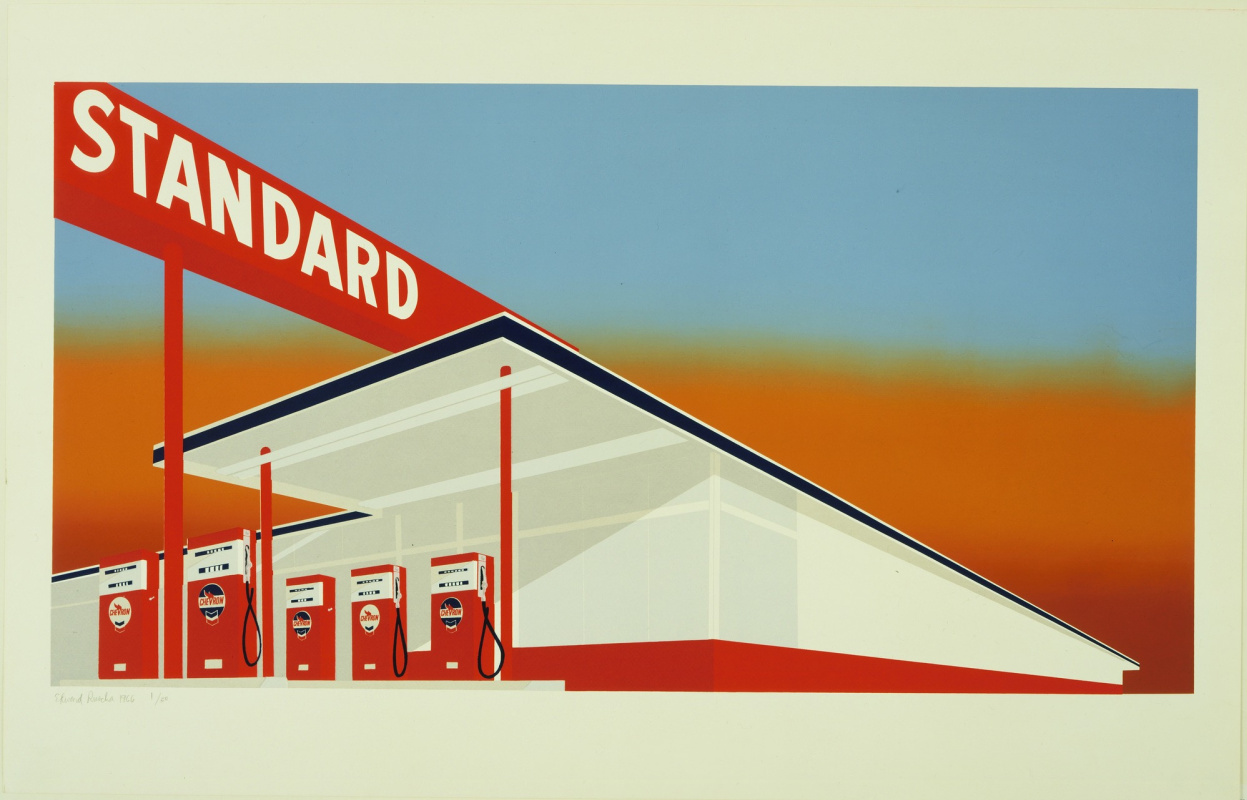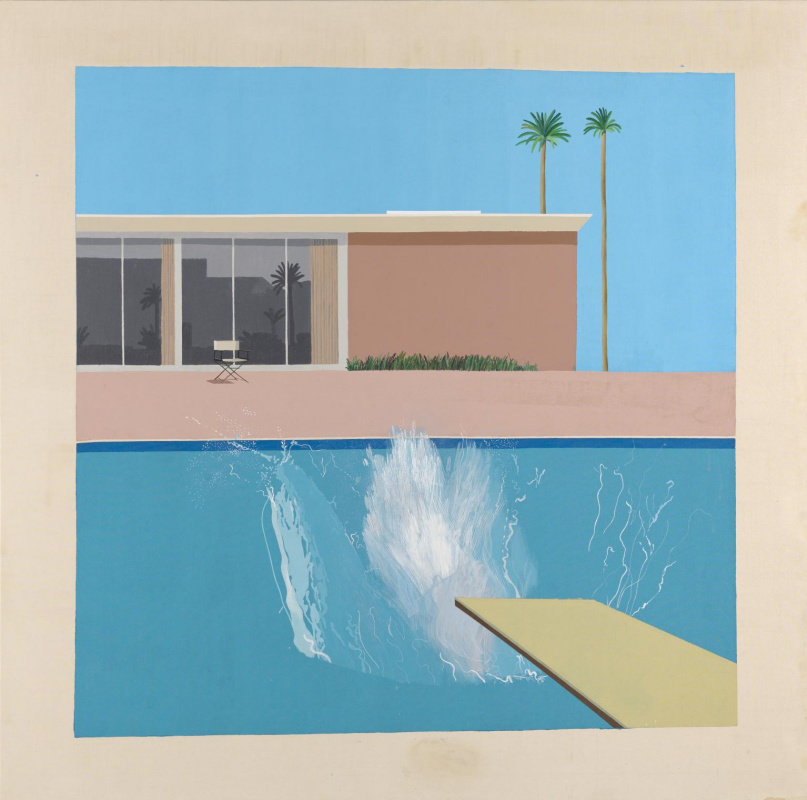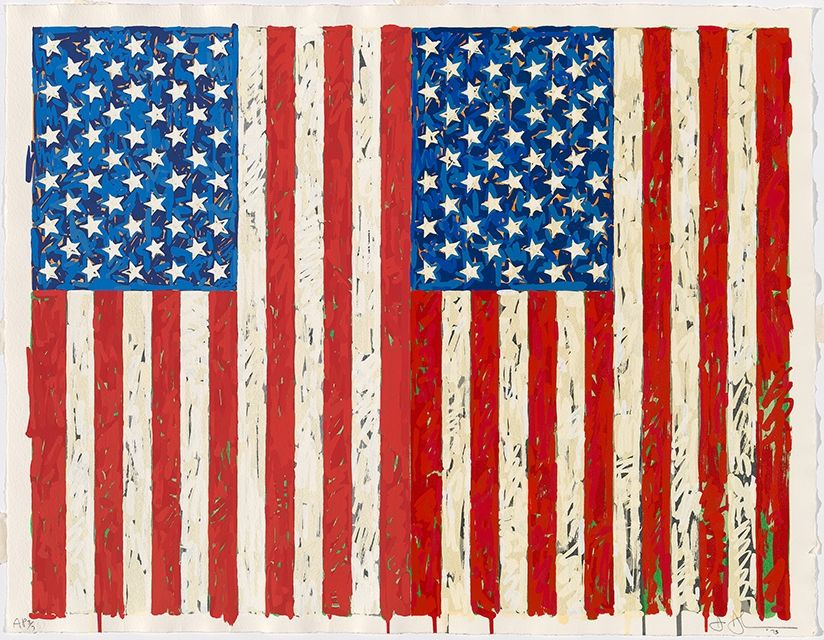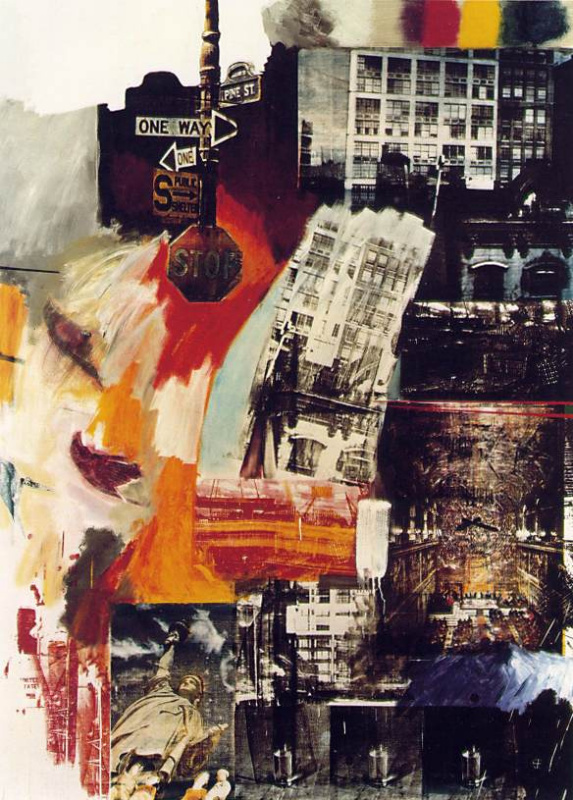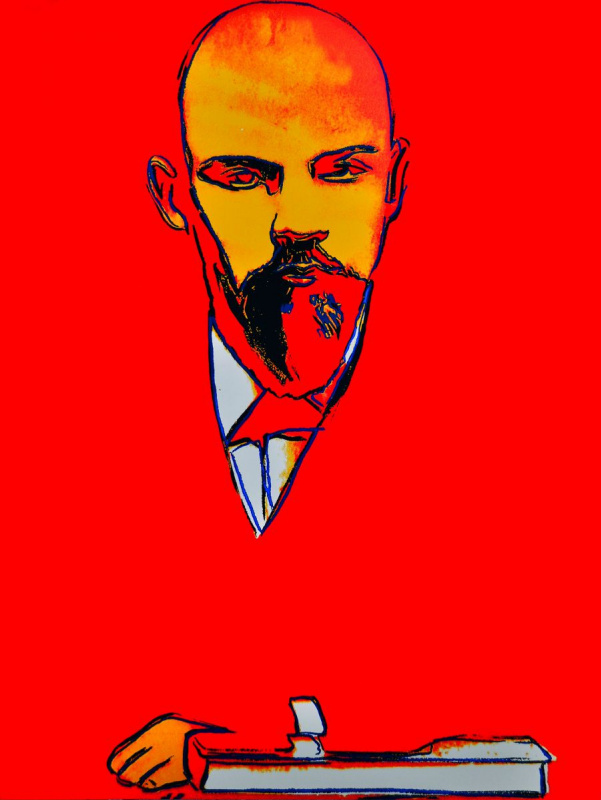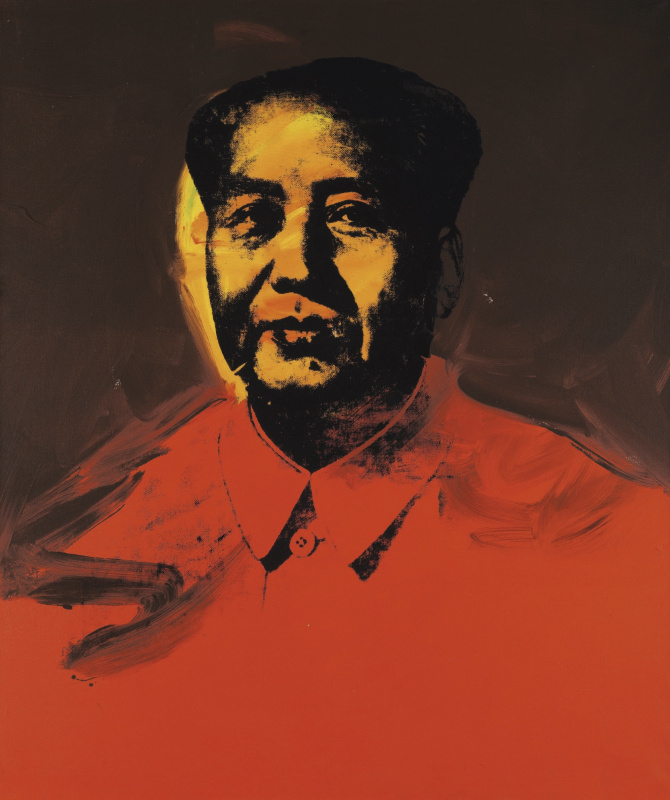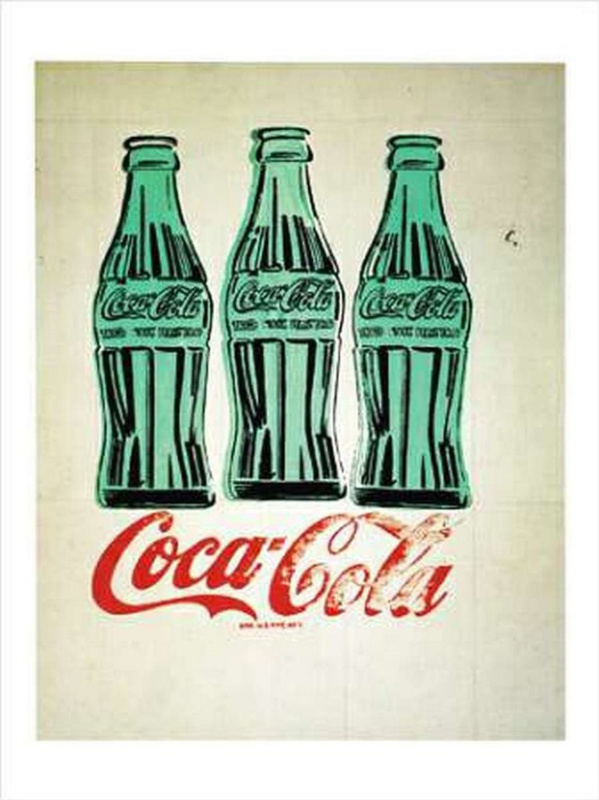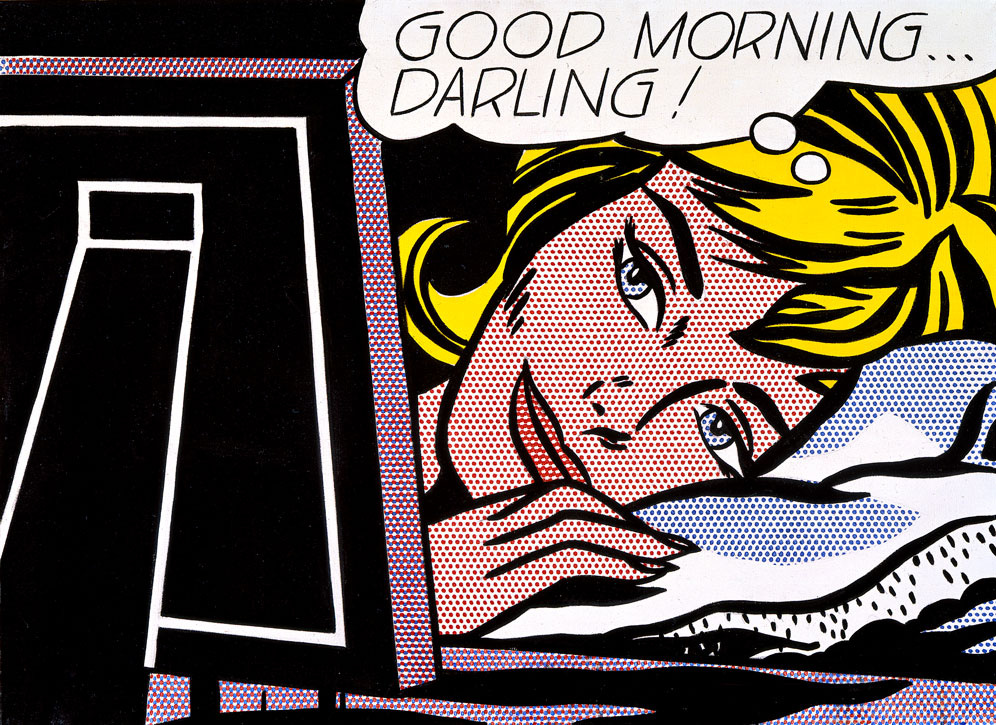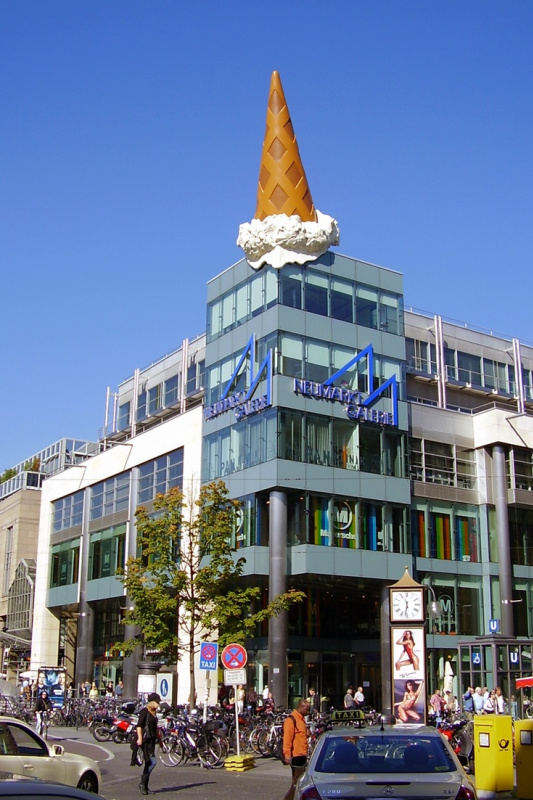Pop art is an art movement that originated in the mid-1950s in the UK, but became widespread mostly in the United States. Pop art became a daring challenge to traditional painting, as it relied on the images from popular culture, including advertising, comics, everyday objects and news. Moreover, the emergence of pop art in the United States was a reaction to the seriousness and pointlessness of abstract expressionism
. The new generation of artists wanted to return to subject painting, while introducing some frivolity, irony into their work, and mix it all with an impressive portion of kitsch.

The art of consumption
After America finally recovered after the Second World War, a powerful economic increase began in the country, which, combined with progress in technology and the media, gave rise to the so-called "culture of consumption". The culture of people with a stable high income and plenty of free time. The industry, which had expanded and strengthened during the war years, begun to shower the mass consumer with a wide variety of products, from hair sprays and washing machines to shiny new convertibles, which, according to advertising, were the material embodiment of happiness. The development of television and new trends in print advertising were significant support for the culture of consumption, as the emphasis was placed on graphic images and recognizable logos — the brands that are now taken for granted in our visually saturated world.It is no coincidence that pop art appeared in America at that time. Following the spirit of the times, the new artists despised all the standards of modern American painting, based on abstraction as a reflection of universal truths and deep personal experiences.
And what about them?
Unlike the prosperous America, Great Britain, the pop art’s birthplace, was having a hard time surviving the post-war years. We can say that pop art owes its appearance to the envious views from across the ocean: American mass culture, idealized magazine pictures of the carefree life of a consumer society. The first to use these images were the artists from the Independent Group, which was founded in early 1952. They formulated and began to distribute most of the basic ideas of British pop art. The leading representatives of the Independent Group were Richard Hamilton, Nigel Henderson, John McHale, Sir Eduardo Paolozzi and William Turnbull. It is believed that the first to use the "pop art" term was art critic Lawrence Alloway, who was also a member of the Independent Group.One of the most significant works of British pop art is the famous collage by Richard Hamilton with an intricate title Just what is it that makes today’s homes so different, so appealing? It was created for the most important exhibition of the Independent Group. The This is Tomorrow exhibition, held at the Whitechapel Gallery in London, was a reflection of the artists' overwhelming interest in popular culture. According to Alloway, "…cinema, science fiction, advertising, pop music. We do not feel hostility towards the popular culture, which is widespread among intellectuals. On the contrary, we accept it as a fact, discuss it in detail and consume it with enthusiasm."
So what makes our current homes so different, so appealing?
1956, 26×24.8 cm
The brainchild of Dada
Many art historians believe that the roots of pop art go much deeper than it is commonly believed. In their opinion, pop art is a direct descendant of Dada, the nihilistic art movement of the 1920s, which mocked the seriousness of Parisian art of the time and, in a more general sense, the political and cultural situation that led to the war in Europe. Marcel Duchamp, the pioneer of Dadaism in the United States, who tried to trim off the distance between art and real life by perpetuating mass-produced products, was one of the most influential figures in the evolution of American pop art. Among the other people who influenced the development of pop art were Stuart Davis, Gerard Murphy and Fernand Leger who depicted the mass production objects in their works. The firsthand pioneers of pop art were Jasper Jones, Larry Rivers and Robert Rauschenberg, the American artists who painted flags, beer cans and other similar objects in the 50s, but they did it in a pictorial expressive manner.The most featured forms of American pop art
— Roy Lichtenstein’s stylized reproductions of the comics with the usage of the coloured dots and planes filled with the same colour;— Andy Warhol’s paintings and silk-screen printings featuring the images of soup cans, soap boxes and bottles of Coca-Cola that are literally "clipped off" from reality;
— Claes Oldenburg's sculptures that perpetuated such everyday things as plumbing, typewriters and hamburgers;
— the Great American Nude series by Тom Wesselmann, flat and candid images of faceless sex symbols;
— the plaster human figures by George Segal, which the artist took to the city streets or placed in the common environment, for example, a bus found in a junkyard.
Key moments
1. By creating paintings and sculptures depicting mass culture objects and media stars, the pop artists sought to blur the boundaries between "high" and "low" culture. One of the most important characteristics of pop art is the concept that there is no hierarchy in culture, and that art can take from any source.2. It could be said that abstract expressionists relied on mental injuries in their work, while the representatives of pop art movement sought the expression of the same injuries in the mediated world of advertising, comics and pop culture in general. However, it would be more accurate to assume that pop artists were the first to realize that, in principle, there is no direct access to anything, be it the human soul, the natural world or any artificial environment. They believed that everything in the world is interconnected, so they tried to express these connections in their work.
3. Despite the fact that pop art includes a wide range of the works that were created under the influence of very different views and positions, most of them are characterized by a certain emotional detachment. Unlike the "hot" expression of the previous generation, pop art is distinguished by a "cool" duality. The subject of much debate was the question of whether this was a consequence of the acceptance of pop culture by artists, or vice versa — its rejection.
4. At first glance, the pop art artists were enthusiastic about the new post-war America with its industrial and media heyday. Some critics considered the pop artists' theme choice as a consequence of the enthusiastic approval of the capitalist market and its diverse products. At the same time, other art critics considered the transformation of everyday life into high art by artists as a kind of cultural criticism: creating an art object based on the everyday product of the mass industry, they thereby emphasized the tendency to turn works of art into goods.
5. Most representatives of pop art began their career in commercial art. Andy Warhol was a successful magazine illustrator and graphic designer. Ed Ruscha also worked as a designer, and James Rosenquist began by painting billboards. Thanks to these first steps in art, artists received a powerful help for further work, a kind of visual dictionary of mass culture, and techniques that allowed combining the spheres of high art and pop culture.
Pop art iconic works
Blam!
1962, 172.7×203.2 cm
To create this work, Liechtenstein borrowed part of the Russ Heath comic titled "All American Man of War" (No. 89). Liechtenstein’s picture is not an exact copy of Heath’s drawing, but at first glance it is easy to confuse them, since the changes made by the artist to the original image are almost invisible. Turning to the popular comics for the subjects, Liechtenstein devoted his career to exploring the boundaries between "high" and "low" art, repeatedly raising questions about the nature of culture and originality, but without giving any definitive answers. As it was with most representatives of pop art, it is impossible to assert with full confidence whether the work of Liechtenstein was the unconditional approval of comics and popular culture in general, or criticism of this culture. The decision in this case remains with the viewer. "BLAM", like other similar works by Liechtenstein, are made in the Ben Day spot technique, borrowed from the same comics.
100 cans
1962, 183×132 cm
When Andy Warhol created the iconic series with soup cans, he never intended to draw attention to the form or composition of these works, unlike abstract expressionists. Warhol’s canvases are made significant by the choice of a universal and recognizable image (like soup cans, Mickey Mouse or the face of Marilyn Monroe)) and its depicting as a mass product, but in the context of fine art. In this sense, Warhol does not just focus on popular images, but rather indicates how these images are perceived by people in our time: they are treated as well-recognizable goods that are sold and bought. This series belongs to the artist’s early period, but very soon he switched to silk-screen printing, believing that images of pop culture should be produced mechanically. One hundred canvases of soup cans created by Warhol for the first solo exhibition at the Ferus Gallery in Los Angeles, allowed him to almost instantly take a high place in the world of American painting and forever change the face of modern art.
Showcase cakes
1962
Oldenburg was one of the few pop art sculptors known for his playfully absurd artworks with food and inanimate objects. The sculptor installed the series under the general title Showcase cakes for the first time in the famous Shop in the Lower East Side. For this project, Oldenburg created several plaster sculptural objects, including a strawberry cake and caramel apple. The installation was framed as a typical American shop, where you can buy not only groceries, but also various products for everyday needs. The sculptor added some advertising posters to them and sold his works at low prices, thus turning art objects into goods. Despite the fact that they were sold, like any mass-produced products, each of these unique items was worked out with great care. Covering his work with paint, Oldenburg used thick, expressive brushstrokes as a mocking reference to the seriousness of abstract expressionism
. In an ironic manner, the sculptor combined the vigour of expressionism with mass-consumption products.
Standard station
I century, 65.1×101.5 cm
The artist, printer and photographer Ed Ruscha was one of the most important representatives of pop art on the west coast of the United States, who mixed Hollywood images with colourful images of popular culture and southwestern landscapes. Gas stations were the Ruscha’s favourite motives, he even dedicated a book to them, Twentysix Gasoline Stations, — a collection of photographs from the artist’s journey through the countryside of the American Southwest. In Standard Station, the artist transforms the banal image of a gas station into a symbol of American consumer culture. Through silk-screen printing, Ruscha reduces the image perspective to a single plan, making it look like advertising posters. The Standard Station, among other things, is also one of the artist’s first experiments with the language and pun, which will come to the fore in his later works.
Big splash
1967, 242.5×243.9 cm
Hockney created a huge canvas measuring almost 2.5×2.5 meters from a photograph he saw in a pool instruction booklet. The artist was intrigued by the idea of transferring a fleeting moment, frozen in the photograph, to the canvas. He said: "I liked the idea of drawing something that lasts two seconds. It took me two weeks to capture these two seconds." The dynamism of the splash contrasts sharply with the static and rigid geometry of the house, the edge of the pool, palm trees and the springboard, neatly placed to form a net around the splash. This gives the picture a consciously created by the artist effect of dissection and incoherence, which has become one of the distinguishing features of Hockney’s style. In addition, the effect of stylization and artificiality is typical of pop art images.
Pop art: favourite objects
Jasper Jones and his flags, letters and numbers
In his early works, Jasper Jones raised the questions about how we see art, how we perceive and create it. He did not distinguish between subject and object, art and life. From his point of view, they are the same. Jones believed that each picture should be perceived not as a reflection of the real world or illustration, but as an object with its own reality.Like the pioneers of the British pop art, Jones was inspired by the ideas of Dadaism, in particular the "readymades" (found objects) of Marcel Duchamp, who challenged the traditional definition of an art object with his urinals and bicycle wheels. However, Jones, unlike Duchamp, did not choose "found objects" as the subjects of his works, but he took the "found images" — flags, signs, letters and numbers instead. This was a new iconography of the recognizable signs, which was addressed by many representatives of pop art.
Jasper Jones created his artworks in the encaustic technique, in which molten wax was the binder for paints. He combined encaustic with collages of newspaper clippings, creating a heterogeneous space of bright colours. His fascination with the general unity of the picture plane goes back through cubism to the works by Cézanne and Chardin. Jones’s creativity consists in playing with visual ideas; in his paintings, one can distinguish several semantic layers that appeal to the viewer at different levels of perception. This art is about art and how we relate to it.
Robert Rauschenberg and his collages
Robert Rauschenberg also used the found images in his works, but unlike in Jasper Jones" paintings, they were combined by common elements with each other or with real objects. Both artists are often considered neo-Dadaists.Inspired by the work of Kurt Schwitters, who created his collages from garbage found on the streets, Rauschenberg began to compose his own paintings and collage works from real objects that he picked up in the streets of New York. The artist said: "I had a rule: if I went around the block and did not find enough material with which I could work, I expanded the search field to another block and went in any direction." He called his multimedia assemblies "combines" and believed that they should look "at least as interesting as anything happening outside the window".
Rauschenberg chose collage as his own creative language of communication, inventing a new way of producing them. He combined oil painting with photographic silk-screen printing. This allowed him to experiment with any images taken from newspapers, magazines, television or movies, which he could reproduce in any size or colour as an element on the canvas. Rauschenberg used these elements to reflect our perceptions of the media. Every day they bombard us with images, most of which we ignore, but some of them (consciously or subconsciously) linger in memory, as they relate to certain personal experiences. Rauschenberg’s paintings were designed to capture this visual informational "noise" in a single picture.
.
Andy Warhol and his icons
If there was an artist who personified the whole pop art movement, then certainly, it was Andy Warhol. He can be said to became the face of the American pop culture, the one who elevated its images to the status of the museum art. Warhol used the second-rate images of stars and consumer products, which, in his opinion, possessed a kind of "internal platitude" that made them more interesting. The artist was truly fascinated by this platitude, which he captured in a series of artworks, ranging from the portraits of celebrities to the cans of soup. Whether it was Campbell’s Tomato Soup, Liz (a portrait of Liz Taylor), Car Crash, or Electric Chair, Warhol’s approach has always been the same. He said: "I think that all paintings should be the same size and colour, so that they are interchangeable, and that no one thinks that his picture is better or worse than others."Just as Cubism grew out of Cézanne's work, so Andy Warhol’s work was based on the "readymades" by Marcel Duchamp. In his spirit, Warhol was a true Dadaist — a sort of "agent provocateur". His numerous statements about art were deliberately cryptic; he never made any explanations, forcing his audience to stay at loss: "I prefer to remain mysterious. I don’t like talking about my past and every time when they ask me about it, I come up with something new." Warhol’s evasive position was his strategy that helped him promote himself. He cultivated his own image as a business model, inseparable from his work. He said: "I started as a commercial artist, and I want to finish as a businessman artist. Being successful in business is the most exciting form of art."
Roy Lichtenstein and his comics
Roy Lichtenstein invented his own direction in pop art, and it was based on the visual images of mass communication — comic magazines. It was a style with a rigidly fixed format: black frames, bright clear colours and shades created with Ben Day dots.Liechtenstein called his early works "expressionist cubism of cowboys and Indians". The artist quickly got tired of the excess of the "expressionist feelings" and challenged this fading tradition with his painting "Look Mickey"(1961), which he copied from a chewing gum wrapper. His works, based on comics, were initially shocking, but, as it was with many pop artists, it was rather quickly welcomed by the galleries and collectors. Liechtenstein said: "It was very difficult to paint a picture so disgusting that no one would want to hang it on their wall. In the end, it was acceptable to hang a rag stained with paint on the wall; everyone was used to it. The only thing everyone hated was commercial art, but obviously they hated it too little."
The thoroughgoing commercial style of Liechtenstein’s paintings became a kind of antidote to the incoherent outbursts of the late abstract expressionism , but at the same time it was not the pure protest art. "I do not think that pop art could exist if Dadaism did not exist before, but I do not think that pop art and Dadaism are the same. I don’t look at my paintings as anti-art, or as something different from traditional painting of Renaissance era." Despite the fact that in Liechtenstein’s signature style there are elements of irony and humour, his works remain within the framework of the traditional usage of lines, shapes, shades and colours as the structural elements of an artwork. His discipline of creating artworks was rather intellectual in nature, it left no room for impulsivity and emotionality.
Claes Oldenburg and his fast food
From the very beginning of his career, Claes Oldenburg preferred sculpture. In the early 60's, he participated in many "happenings" - spontaneous, impromptu artistic events in which the participants' experience was much more important than the final product, a kind of art that grew out of a culture of consumption. Oldenburg was inspired by consumer goods. In 1961, he opened his Shop, in which he sold plaster copies of fast food and various products. He replenished his supplies of "goods" in his studio located in the back of the store.Oldenburg’s works are full of irony and controversy: he made solid objects look like a washbasin of soft, diffluent vinyl, while soft objects, such as hamburgers, were as if of solid painted plaster. In addition, he played with the sizes of objects, recreating small objects like spoons and cherries on an architectural scale. He said: "I like to take a subject and completely deprive it of its inherent function". Arbitrarily changing the scale, size and other characteristics of objects, Oldenburg thus changed their meaning and made the viewer doubt and reconsider their attitude to them. His large-scale works, placed in public places, acquired powerful surreal qualities. They made the viewer feel like Gulliver in Brobdingnag.
Title illustration: Roy Lichtenstein, Crying girl, 1963
Photo sources: jsimsmaker.wordpress.com, jolienfagard.wordpress.com
Written by Eugeniya Sydelnykova
Photo sources: jsimsmaker.wordpress.com, jolienfagard.wordpress.com
Written by Eugeniya Sydelnykova






